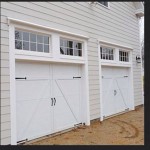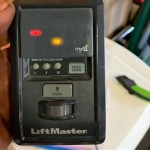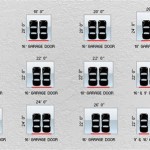Understanding Bottom Garage Door Weather Seal: Importance, Types, and Installation
The bottom garage door weather seal is a critical component in maintaining the integrity of a garage and protecting the contents within. It provides a barrier against the elements, pests, and debris, contributing to energy efficiency and overall property value. Understanding the function, types, maintenance, and replacement of this seal is essential for any homeowner or property manager.
This article will delve into the various aspects of bottom garage door weather seals, covering their purpose, different material types, installation procedures, and common issues. The information presented aims to provide a comprehensive overview to help readers make informed decisions regarding their garage door maintenance.
The Purpose of a Bottom Garage Door Weather Seal
The primary function of the bottom garage door weather seal is to create a tight seal between the bottom edge of the garage door and the floor. This seal serves numerous important purposes, impacting both the functionality and the longevity of the garage and its contents.
Firstly, the weather seal acts as a barrier against the elements. Rain, snow, and wind can easily enter a garage if the seal is compromised or missing entirely. This can lead to water damage, corrosion of metal tools and equipment, and accelerated deterioration of stored items. The seal effectively prevents water from seeping under the door and protects the interior from the harsh effects of the weather.
Secondly, the seal provides protection against pests. Insects, rodents, and other small animals often seek shelter in garages, particularly during colder months. A properly installed and maintained weather seal can significantly reduce the likelihood of these unwanted guests entering the garage. This is especially important for homeowners who store food items, gardening supplies, or other materials that may attract pests.
Thirdly, the weather seal helps in maintaining a consistent temperature within the garage. By preventing drafts and air leaks, it contributes to energy efficiency, particularly if the garage is insulated. This can be especially beneficial for attached garages, as it reduces heat loss during the winter and prevents warm air from entering during the summer, ultimately lowering heating and cooling costs for the entire home.
Fourthly, the bottom garage door weather seal helps keep out debris such as leaves, dust, and dirt. Over time, accumulated debris can damage garage door components, clog drainage systems, and create an unsightly appearance. The seal minimizes the entry of these materials, helping to keep the garage clean and functional.
Finally, a good weather seal can contribute to noise reduction. It can help to dampen the sound of the garage door opening and closing, as well as reduce external noise from entering the garage. This is particularly important for homes located near busy streets or industrial areas.
Types of Bottom Garage Door Weather Seals
Bottom garage door weather seals come in various materials and designs, each offering different levels of performance and durability. The choice of seal often depends on factors such as the climate, the type of garage door, and the specific needs of the homeowner.
Vinyl Seals: Vinyl is one of the most common materials used for bottom garage door weather seals. It is relatively inexpensive, easy to install, and provides good protection against the elements. Vinyl seals are typically flexible and can conform to minor imperfections in the garage floor. However, they may become brittle and crack over time, especially in colder climates.
Rubber Seals: Rubber seals offer greater durability and resistance to extreme temperatures compared to vinyl. They are less likely to crack or become brittle in cold weather and can withstand more wear and tear. Rubber seals are generally more expensive than vinyl seals but offer a longer lifespan.
Silicone Seals: Silicone seals are known for their superior flexibility and resistance to extreme temperatures. They remain pliable even in very cold weather and can provide an excellent seal against the elements. Silicone seals are also resistant to UV damage and chemical degradation. However, they are typically the most expensive type of bottom garage door weather seal.
T-Style Seals: T-style seals, also known as T-end seals, are designed to fit into a T-shaped groove on the bottom of the garage door. These seals are easy to install and provide a secure fit. They are commonly made of vinyl or rubber and come in various sizes to accommodate different garage door thicknesses.
U-Style Seals: U-style seals, also known as U-end seals, are designed to wrap around the bottom edge of the garage door. These seals provide a tight seal and offer good protection against the elements. They are typically made of vinyl or rubber and are available in different sizes.
Bulb Seals: Bulb seals feature a hollow bulb shape that compresses when the garage door is closed, creating a tight seal. These seals are particularly effective at sealing uneven or uneven garage floors. They are commonly made of rubber or silicone and are known for their durability and performance.
Brush Seals: Brush seals consist of a strip of bristles that are attached to the bottom of the garage door. These seals are particularly effective at preventing the entry of dust, dirt, and debris. They are commonly used in commercial and industrial settings but can also be used in residential garages. Brush seals are less effective at sealing against water compared to other types of seals.
When selecting a bottom garage door weather seal, it is crucial to consider the specific needs of the garage and the local climate. Factors such as temperature extremes, exposure to sunlight, and the presence of uneven flooring should all be taken into account.
Installation and Maintenance of Bottom Garage Door Weather Seals
Proper installation and regular maintenance are essential for ensuring the effectiveness and longevity of a bottom garage door weather seal. A poorly installed or neglected seal will fail to provide adequate protection and may even damage the garage door itself.
Installation: The installation process for a bottom garage door weather seal typically involves the following steps. First, the old seal needs to be removed. This usually involves pulling the old seal out of the retaining track on the bottom of the garage door. If the seal is stuck, a utility knife or pliers can be used to loosen it. It's important to clean the retaining track thoroughly after removing the old seal to remove any debris or corrosion.
Next, measure the width of the garage door to determine the length of the new seal required. Cut the new seal to the appropriate length using a utility knife or scissors. Apply a lubricant, such as dish soap or silicone spray, to the retaining track to make it easier to slide the new seal into place. Insert one end of the new seal into the retaining track and slide it along the track until it is fully installed. Ensure that the seal is properly aligned and that it fits snugly against the garage floor.
For some types of seals, such as U-style seals, it may be necessary to use screws or nails to secure the seal to the bottom of the garage door. Follow the manufacturer's instructions carefully when installing these types of seals.
Maintenance: Regular maintenance is crucial for prolonging the lifespan of the bottom garage door weather seal. Periodically inspect the seal for signs of wear and tear, such as cracks, tears, or deformation. Clean the seal regularly with a mild soap and water solution to remove dirt, debris, and stains. Avoid using harsh chemicals or abrasive cleaners, as these can damage the seal. Lubricate the seal with a silicone-based lubricant to keep it pliable and prevent it from sticking to the garage floor.
If the seal is damaged or worn, it should be replaced promptly to maintain its effectiveness. Ignoring a damaged seal can lead to water damage, pest infestations, and energy loss. When replacing the seal, choose a high-quality replacement seal that is compatible with the garage door.
In addition to regular maintenance, it is also important to ensure that the garage floor is level and free of cracks or uneven surfaces. An uneven floor can compromise the seal's ability to create a tight barrier. If the floor is uneven, consider applying a self-leveling compound to create a smooth, even surface.
By following these installation and maintenance guidelines, homeowners can ensure that their bottom garage door weather seal provides effective protection against the elements, pests, and debris, while also contributing to energy efficiency and overall property value.
Choosing the right bottom garage door weather seal and implementing proper installation and maintenance practices can significantly enhance the functionality, security, and longevity of a garage. Careful consideration of the factors discussed above will result in a well-protected and energy-efficient garage space.

Frost King 16 Ft Garage Door Bottom Seal Kit 2 1 4 In G16h The Home

Frost King 16 Ft Garage Door Bottom Seal Kit 2 1 4 In G16h The Home

Frost King 18 Ft Vinyl Garage Door Bottom Replacement Seal 2 3 4 In Rv18 The Home

Guide Garage Door Weather Seal Ssc

Frost King 16 Ft Garage Door Bottom Seal Kit 2 1 4 In G16h The Home

Bottom Astragal Solid Syn Rubber For Up To 1 3 8 Thick Doors Part Bsr 138s

Action Industries Rodent Block Garage Door Bottom Seal Kit With 1 3 8 In Aluminum Retainer And Epdm Rubber For Single Car A13xt 09 A The Home

Pemko P365v16 Garage And Overhead Door Bottom Trademark Hardware

Weatherstrips Weather Seals For Garage Doors

Garage Guardian U Bottom Seal With O Ring








